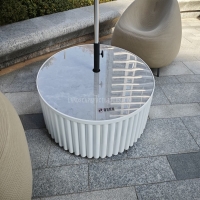Welcome to the website for landscape facilities products and knowledge.
How does the table’s design account for the need for easy access to USB charging ports?
Contemporary table designs strategically incorporate USB charging ports to address our growing dependency on electronic devices. Rather than treating power access as an afterthought, modern furniture integrates charging capabilities directly into the table's architecture. Designers typically position multiple USB ports along the table's edge or on dedicated charging stations within arm's reach, eliminating the need for users to stretch or search for power sources.
The most innovative tables feature both standard USB-A and newer USB-C ports to accommodate various devices, with some designs incorporating wireless charging pads on specific surface areas. These charging elements are often recessed or surrounded by subtle lighting to ensure visibility without creating visual clutter. Many designs include cable management systems beneath the table surface, with discreet channels and grommets that keep cords organized and prevent tangling.
Ergonomics play a crucial role in port placement, with designers considering natural arm reach and common device usage patterns. Higher-end models may include smart charging technology that detects device types and delivers optimal power levels. This thoughtful integration of charging access transforms tables into multifunctional hubs that support productivity while maintaining aesthetic appeal, effectively bridging the gap between furniture design and technological necessity in our increasingly digital lives.
Related search:

Recommendation
Round metal tube border design table with tempered glass or granite countertop on the top.